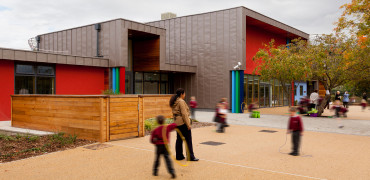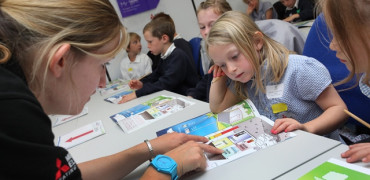We’ve hit that time of year where the carefree days of summer have almost disappeared. We crank up the heating, both at home and in our places of work, and start to think about searching out our trusty winter coat; you know the one that was stuffed into the back of your wardrobe in April, in preparation for keeping warm throughout another unpredictable British winter.
It’s also the time of year that when the kids go back to school. Like them, there are lots of lessons that we can learn through our ‘hot one day, freezing cold the next’ September that will put us in a good place for the future.
“If it’s too hot in the room, I open the window.” Heard that before? This is a typical comment you’ll hear when staff talk about their energy use at work at this time of year, and it’s not really surprising. Opening a window will provide them with a quicker cool-down than turning down the thermostat.
Many organisations put measures in place to reduce energy consumption, but very few changes can be implemented or the full benefits realised without the co-operation of users. Namely, your staff. Companies need to get their staff on board, and this can be difficult to achieve, as most people see energy usage as essential, and expect that it is both cheap and ‘on tap’.
Sustainable or ‘green’ practices make good business sense and should be part of the organisation’s overall strategy.
As a business, energy brings with it financial costs and environmental impacts (to name a few), but these impacts are rarely evident or immediately obvious and do not encourage users to be mindful of their energy usage behaviour.
So how do you motivate your users to help you save energy? Well, you’ll need to find engaging ways of approving and promoting their actions and concern about saving energy. You will most likely have to change behaviours in the first instance, by first improving their understanding of their own habits, and then the impact these actions have.
It’s important to investigate what motivates your users, and look at practices around IT, heating, cooling, lighting usage, attitudes to energy usage, barriers to energy saving and the effectiveness of incentives and penalties. You may want to consider using questionnaires and focus groups to find the incentives that appear to be the most effective, and action them accordingly.
Effective energy usage should neither be top-down, nor bottom-up within an organisation, but it is vitally important that senior management get involved, as their buy-in is critical if you are to get energy-saving projects off the ground, and highlight the potential cost savings that can be made through energy-efficient behaviour. Sustainable or ‘green’ practices make good business sense and should be part of the organisation’s overall strategy.
Whatever method you choose to engage with and motivate your users, the first step is to know enough detail about the energy being consumed – how much, where and by whom.
It is becoming more commonplace to have dashboards, which display the energy usage statistics of a building or part of a building, and these are a great starting point for raising awareness. Visual displays of data are worth doing as they allow users to quickly engage with the latest matter, and the proportion of energy use that is under the control of the user may actually be quite small – so focus on the marginal gains. More importantly though, dashboards could be the community-building tool that encourages interaction and involvement.
Everbody needs to do their bit
There are several ways of achieving increased interaction and involvement, and using competition and cooperation are great places to start, as the desire to ‘do better’ than others can be a strong encouragement in energy saving. The expectation of cooperation can also work in a similar way, and if a number of groups are working together to reduce energy usage there may be more impetus and also some social expectation to ‘do your bit’, as people need to feel that others are contributing too.
What you must do though is highlight the benefits of your reduced energy usage strategy, explaining how savings are being used so users can see how their efforts are paying off. Being able to facilitate feedback and allowing two-way interaction means users feel they have more of a stake in the initiative.
Changing values and behaviours needs to work with communities, rather than individuals, so think about involving your communications department to help you publicise what you are doing and its environmental and cost-saving benefits, and then keep up that momentum. A drive to engage users is not something that can be done as a one-off exercise, as it needs to be repeated, so that new habits and behaviours become fully embedded and can adapt to changes in the staff population, coping with new staff with new habits, motivations and behaviours, as well as continuing to engage existing users.
Make sure your energy-saving initiative is adaptable and can be amended easily. What happens to your targets if, say, the building use changes and more people use it? In a world of rapid technological change, strategies will also need to be adapted as new technologies become available and existing technologies become more mature.
Above all, be realistic, but not daunted by the technical challenges ahead. And remember, you’ll always have your trusty winter coat to turn to if things don’t work out the way you first thought.
Katie King, MBA is founder of social media experts Zoodikers @zoodikers and @AIinFM; Director of Transformation @DigitalLeadersA; and a keynote speaker on AI and social media @TEDx
If you have any questions about this article, you can contact us via email. Or if you would like to tweet us, please follow our MEUK_LES twitter page.
We upload new articles every week so remember to check back regularly.
You can also sign up for our monthly newsletter below.


